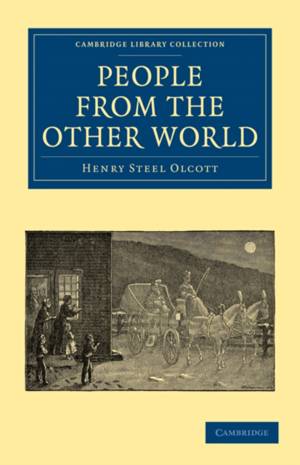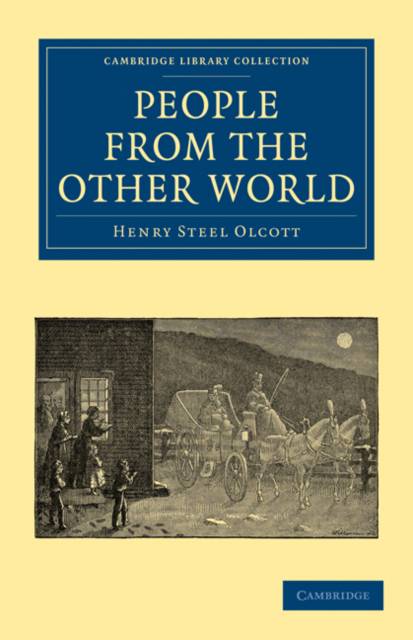
Door een staking bij bpost kan je online bestelling op dit moment iets langer onderweg zijn dan voorzien. Dringend iets nodig? Onze winkels ontvangen jou met open armen!
- Afhalen na 1 uur in een winkel met voorraad
- Gratis thuislevering in België vanaf € 30
- Ruim aanbod met 7 miljoen producten
Door een staking bij bpost kan je online bestelling op dit moment iets langer onderweg zijn dan voorzien. Dringend iets nodig? Onze winkels ontvangen jou met open armen!
- Afhalen na 1 uur in een winkel met voorraad
- Gratis thuislevering in België vanaf € 30
- Ruim aanbod met 7 miljoen producten
Zoeken
Omschrijving
The lawyer and journalist Henry Steel Olcott (1832-1907) published People from the Other World in 1875. Part 1 of the work is a careful account of Olcott's 1874 investigations into the famous Eddy brothers of Chittenden, Vermont, and their claimed psychic powers. Part 2 is a report into two Philadelphia mediums who claimed to be able to call up two spirits called John and Katie King. The account includes descriptions of séances, healings, levitation, teleportation and the famous Compton transfiguration. Olcott, a founding member of the Theosophical Society and its first president, was a pioneer of psychical research. This work, deeply influenced by Helena Blavatsky (1831-1891), who he met at Chittenden, is one of his most popular. It offers an important insight into the nineteenth-century fascination with the occult and is a classic example of a Victorian attempt to approach the supernatural with the rigours of scientific investigation.
Specificaties
Betrokkenen
- Auteur(s):
- Uitgeverij:
Inhoud
- Aantal bladzijden:
- 504
- Taal:
- Engels
- Reeks:
Eigenschappen
- Productcode (EAN):
- 9781108072656
- Verschijningsdatum:
- 19/05/2011
- Uitvoering:
- Paperback
- Formaat:
- Trade paperback (VS)
- Afmetingen:
- 140 mm x 216 mm
- Gewicht:
- 635 g

Alleen bij Standaard Boekhandel
+ 199 punten op je klantenkaart van Standaard Boekhandel
Beoordelingen
We publiceren alleen reviews die voldoen aan de voorwaarden voor reviews. Bekijk onze voorwaarden voor reviews.











